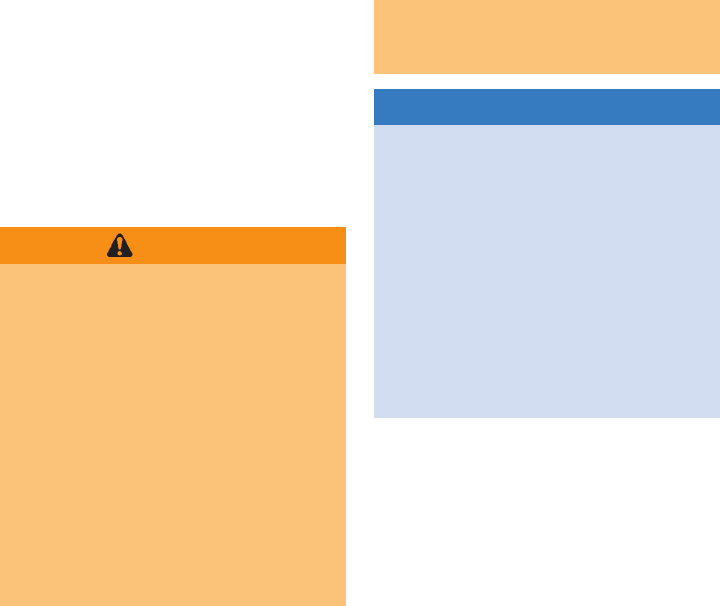
Black plate (281,1)
Model "R35-D" EDITED: 2009/ 3/ 11
dealer.
If the low tire pressure and the run-flat tire
warning appears on the vehicle information
display:
. Do not exceed 50 MPH (80 km/h).
. Increase your following distance to allow for
increased stopping distances.
. Avoid sudden maneuvers, hard cornering
and hard braking.
WARNING
. Although you can continue driving
with a punctured run-flat tire, re-
member that vehicle handling sta-
bility is reduced, which could lead to
an accident and personal injury.
Also, driving a long distance at high
speeds may damage the tire.
. Do not drive at speeds above 50
MPH (80 km/h) and do not drive
more than 50 miles (80 km) with a
punctured run-flat tire. The actual
distance the vehicle can be driven
on a flat tire depends on outside
temperature, vehicle load, road con-
ditions and other factors.
. Drive safely at reduced speeds.
Avoid hard corne ring or braking,
which may cause you to lose control
of the vehicle.
NOTICE
. Never install tire chains on a punc-
tured run-flat tire, as this cou ld
damage your vehicle.
. Avoid driving over any projection or
pothole, as the clearance between
the vehicle and the ground is smal-
ler than normal.
. Do not enter an automated car wash
with a punctured run-flat tire.
. Have the punctured tire replaced by
a GT-R certified NISSAN dealer as
soon as possi ble, as the tire’s
performance capability is reduced.
Tires for All-Wheel Drive (AWD)
If excessive tire wear is found, it is recom-
mended that all four tires be replaced with tires
of the specified size, brand, construction and
tread pattern. The tire pressure and wheel
alignment should also be checked and cor-
rected as necessary. Contact a GT-R certified
NISSAN dealer.
TIRE CHAINS
Use of tire chains may be prohibited according
to location. Check the local laws before instal-
ling tire chains. When installing tire chains, make
sure they are of proper size for the tires on your
vehicle and are installed according to the chain
manufacturer instructions. Use only SAE class
S chains. Class “S” chains are used on vehicles
with restricted tire to vehicle clearance. Vehicles
that can use Class “S” chains are designed to
meet the SAE standard minimum clearances
between the tire and the closest vehicle
suspension or body component requ ired to
accommodate the use of a winter traction device
(tire chains or cables). The minimum clearances
are determined using the factory equipped tire
size. Other types may damage your vehicle. Use
chain tensioners when recommended by the tire
chain manufacturer to ensure a tight fit. Loose
end links of the tire chain must be secured or
removed to prevent the possibility of whipping
action damage to the fenders or undercarriage.
If possible, avoid fully loading your vehicle when
using tire chains. In addition, drive at a reduced
speed. Otherwise, your vehicle may be da-
maged and/or vehicle handling and performance
may be adversely affected.
NOTE:
Tire chains must be installed only on the
rear wheels and not on the front wheels.
Maintenance and do-it-yourself 8-35


















